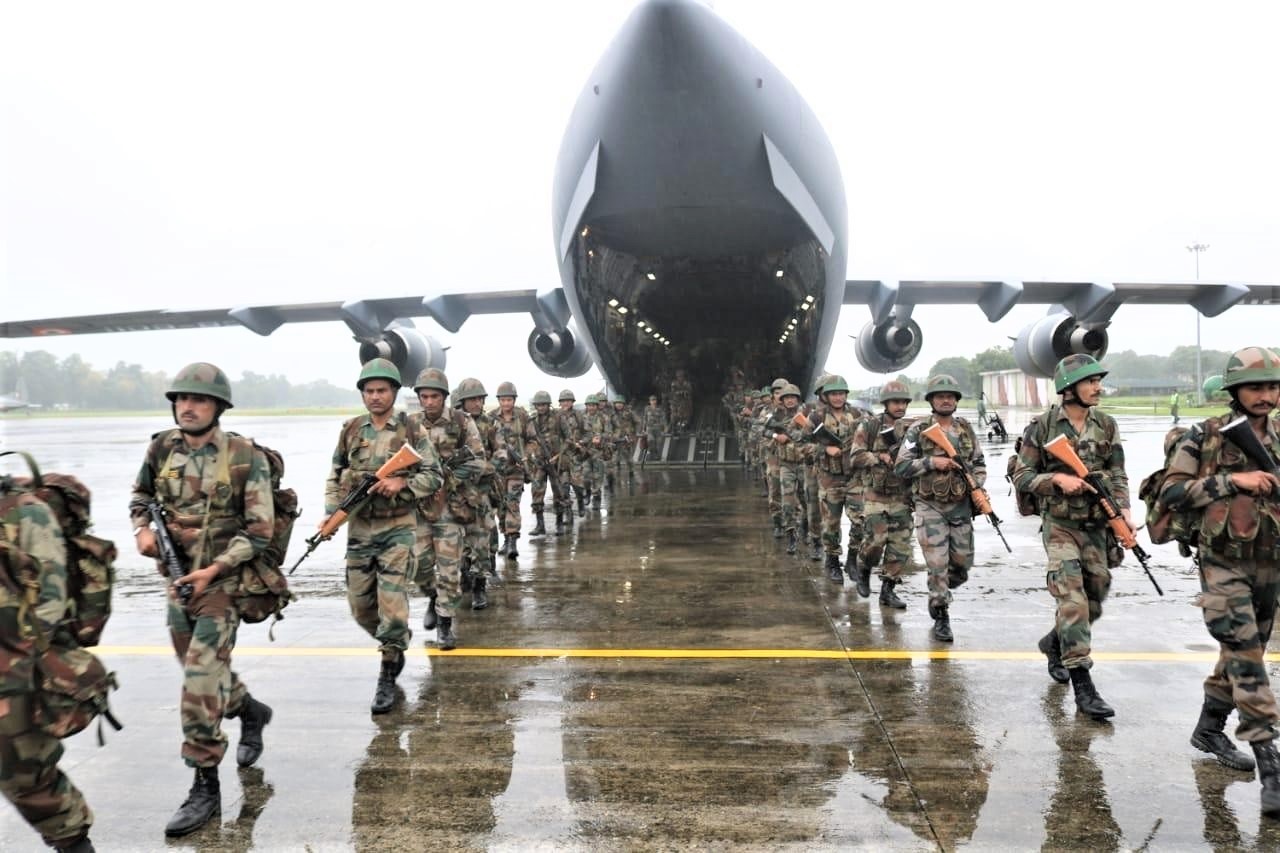New Delhi, 27 October: The lone Mountain Strike Corps of the Indian Army has reached Arunachal Pradesh for the exercise after the Chinese army stirred up in the Tawang sector.
These are the same brave soldiers of the Indian Army’s ‘Brahmastra’ Mountain Strike Corps who in August last year stunned China by capturing the hills of the Pangong Lake and the Kailash Range south of the day. China is stunned by these strategic heights of the Indian Army and it is still adamant on the demand to remove the soldiers of India from here.
In this exercise, the Mountain Strike Corps will focus on enhancing its offensive capabilities and along with it the Indian Air Force will also be involved.
The Indian Army team is strengthening its Integrated Battle Group (IBG) strategy in high altitude areas for training in extreme cold conditions. The Indian Army has further strengthened the deployment of its troops along the border of China and Pakistan.
The Army has inducted about 10,000 more soldiers in its only Mountain Strike Corps. These brave soldiers of the Indian Army will keep a close watch on the borders of both the countries. They have been given dual responsibility as part of the exercise to rebalance border security, but they have been asked to focus more on the China border.
This corps had captured the Kailash range
The Indian Army plans to create a full-fledged Mountain Strike Corps, which will consist of more than 90 thousand soldiers. The Indian Army’s Specialized Corps Mountain Strike Corps completed its first exercise ‘Himvijay’ in 2019 but the exercise could not take place last year due to a standoff with China in eastern Ladakh.
Despite this, the Mountain Strike Corps played a key role in the capture of the crucial Kailash Range on the southern bank of Pangong Lake in August 2020. The Mountain Strike Corps based in Panagarh (West Bengal) has arrived this year to practice amid the ongoing tension with China in eastern Ladakh.
There has been a boom in infrastructure creation in Arunachal Pradesh
Apart from this, India has started rapidly preparing its infrastructure in Arunachal Pradesh to counter China. New all-weather roads, bridges, helicopter bases and underground ammunition stores are being built, along with expediting work on new tunnels in the border areas. Most of these projects were planned earlier but these projects have been expedited after the standoff with China started.
Despite the rapid construction, sources in the defense establishment admit that we are currently lagging behind the Chinese in terms of infrastructure. The Chinese have been focusing on improving their infrastructure along the Line of Actual Control (LAC) for many years and they have better road connectivity to the LAC.
Sela tunnel project will be completed by June next year
India has also undertaken more projects in the border areas as compared to the infrastructure of the Chinese military. The infrastructure has changed in the last three years, which will continue to improve in the times to come. It has been extended to such an extent that the authorities are considering premature completion of the crucial Rs 700 crore Sela Tunnel project in June next year.
In addition to the Sela Tunnel at an altitude of 13,700 feet, there is another short tunnel of 980 meters and about 1.2 kilometers of road, which will be able to monitor the movement of traffic in Chinese territory.
Movement will continue throughout the year in Kameng and Tawang districts
Apart from this, the Nesiphu Tunnel on the 317-km-long Balipara-Charduar-Tawang (BCT) road is also a strategic project, which will enable round-the-year movement towards West Kameng and Tawang districts of Arunachal Pradesh. The tunnels have been designed in such a way that it will be able to easily carry all the equipment of the army including Bofors, tanks and even in future Vajra howitzers.
Sela Tunnel Project Director Col Parikshit Mehra told that the first tunnel will be completed by Army Day (15 January) 2022 and the second by June.
The General Officer Commanding of the Mountain Division, Major General Zubin A. Minawala said that a major focus has been on infrastructure not only from the military point of view but also from the civilian aspect. A smooth connectivity is key in hilly terrain where the weather can play its own game.





